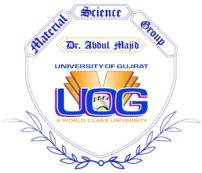Material Science Group's Newsletter-2016
Editorial Board
Dr. Abdul Majid (Group Leader)
Mr. Irslan Ullah Ashraf (Editor)
Active Researchers
Bibliography and short Description to their research work
Mr. Irslan Ullah Ashraf
In 2016 Irslan Ullah worked on 2D TM dichalcogenides material and modified its electronic propertied using perpendicular electic field he performed, a systematic computational study of effects of applied electric field on the electronic properties of Gd doped MoS2 monolayer. He employed package ADF-BAND to investigate density of states and band structure of pure and Gd doped monolayer of MoS2 using supercell approach. He carried out detailed analysis of electric field dependence of Gd, Mo and S related states in the monolayers and discussed them to explore the possible applications in the electronic devices. The findings on the basis of calculated results indicate that band gap of the monolayer decrease with increase in value of applied electric field. He also reported a model indicating this behavior . he further revealed that formation energy of the monolayers show consistent decrease with increase in electric field.
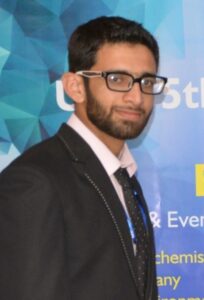
Mr. Azmat
Mr Azmat is investigating the nature of 3d-4f exchange interactions in III-Nitride semiconductors, He has studied the Ti-Ce co-doped AlN using first principles calculations. using supercell approach with varying dopant concentration and different inter-dopant separation. He found the configuration with dopant located as nearest neighbor distance and diluted concentration of 3.125% most stable. His results exhibited prominent evidence of 3d-4f-5d strong hybridization suggesting 3d-4f direct exchange interactions which may play valuable role to exploit the system as high Curie temperature ferromagnetic semiconductors for use in spintronics. Moreover, by studying the charge transfer analysis he is finding application in the electrochemical devices He is also studying the The 4f-5d and 3d-5d hybridizations that predicts excellent luminescence phenomena in the material.
His applications area includes opto-electronic and spintronics devices including photovoltaic cells, deep ultra-violet LEDs with spin polarized emission, magneto-resistive memory storage, quantum computation.
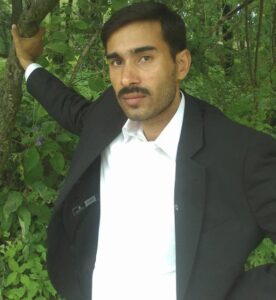
Ms. Anum Imtiaz
Miss Anum investigated The structural, electronic and magnetic properties of MoS2 single layer doped with 4f rare earth metal (REMs) atoms Sm, Eu, Gd, Tb and Dy in the form of Mo11S24RE supercells using first-principle calculations implemented within ADF-BAND. Her results with Pedrew Burke Ernzerhof (PBE) exchange correlational functional used within generalized gradient approximation (GGA) showed that variation of bond length is maximum around impurity atom in 2D Eu:MoS2 and they are minimum near Sm impurity. By the analysis of density of states she showed that impurity levels are present in the band gap of MoS2 that lead to band narrowing. Analyzing the difference of spin charge densities, the magnetic moment of 3.3 µB, 8.1 µB, 8.5 µB, 6.8 µB and 6.4 µB was seen for Sm-, Eu-, Gd-, Tb- and Dy-doped structures, respectively. The findings of her work point out that the band gap and magnetic properties of 2D MoS2 structures can be tuned by 4f-RE doping to make it p-type degenerate semiconductor.
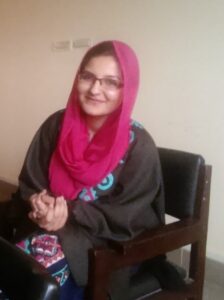
Ms. Farzana
Miss Farzana is the active MPhil researcher and she is investigating the effects of nitrogen vacancies on electronic and magnetic properties of Ce doped wurtzite AIN . she is carrying out the work with motivation to realize novel wide gap diluted magnetic semiconductor possessing intrinsic ferromagnetism at ambient temperature. She has used the Density functional theory based package ADF-BAND to investigate density of states and band structure of pure Ce doped AIN using super cell approach. Besides simulating 32 atoms super cells in BAND, she also carried out calculation on 64 atoms super cell using VASP package to explore the low impurity concentration.. She found that Ce:AIN produced the magnetic character in contrast to pure AIN without doping that reveals that the pure AIN is a non-magnetic material and the conventional doubling exchange ordering experimental in case of vacancy added Ce:AIN switched to carrier mediated exchange – complex in Ce:AIN. She has found the effect of vacancy on formation energy and magnetic character of host subsatance. Her application area include Solar sell generation, Magnetic storage and Opto-electronic devices, operate at high Curie temperature magnetic devices.
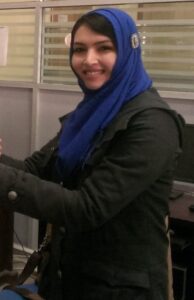
Ms. Alina
The experimentally observed intrinsic point defects, frequently occurring in monolayer MoSe2, have been studied through first principle calculations and their effect on the electronic structure has been intensively discussed. Pristine m-MoSe2 has been found to be a non-magnetic n-type semiconductor. VBM and CBM have the same orbital character, consisting of Mo-d and Se-p orbitals, making MoSe2 defect-sensitive. The Selenium (chalcogen) vacancies decrease the band gap successively with the increasing number of vacancies and introduce deep states in the structure. Molybdenum (transition metal) vacancies tend to shift the semiconducting character of the material towards the metallic. The antisite defects to decrease the band gap intensively and introduce defect states in the structure. The largest number of defect states are introduced by the vacancy complex. Out of the nine defect configurations studied, only the MoSe2 antisite defect and Mo vacancies at large distance could induce spin in the structure. Defect states are induced by all the defect configurations studies which can be engineered for enhanced photoluminescence to be used in optoelectronic devices. Moreover, the spin observed in the MoSe2 and Mo vacancies at large distance hints that they can be used for DMS materials in spintronic applications.
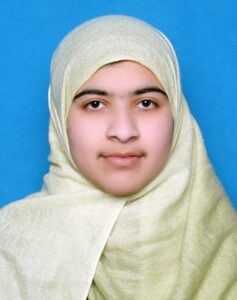
Passing out Students
Miss Mehreen javadcompleted and successfully defended her MPhil thesis in 2016.
Her study reports a systematic density functional theory-based analysis on electronic properties of individual doping and codoping of Ti and Ce into GaN. In the case of codoped GaN, the placement of Ti and Ce at nearest neighbour sites appeared as the most stable configuration. The unoccupied states in the case of individual doped material were observed to become occupied after codoping, and a metal-to-metal charge transfer of the Ti-N-Ce character was observed in the material. The interaction between dopants suggests 4f-5d-CB hybridization that opens the way to the exploitation of novel luminescence phenomena. A model showing charge transfer and interaction between the dopants was proposed by her study.
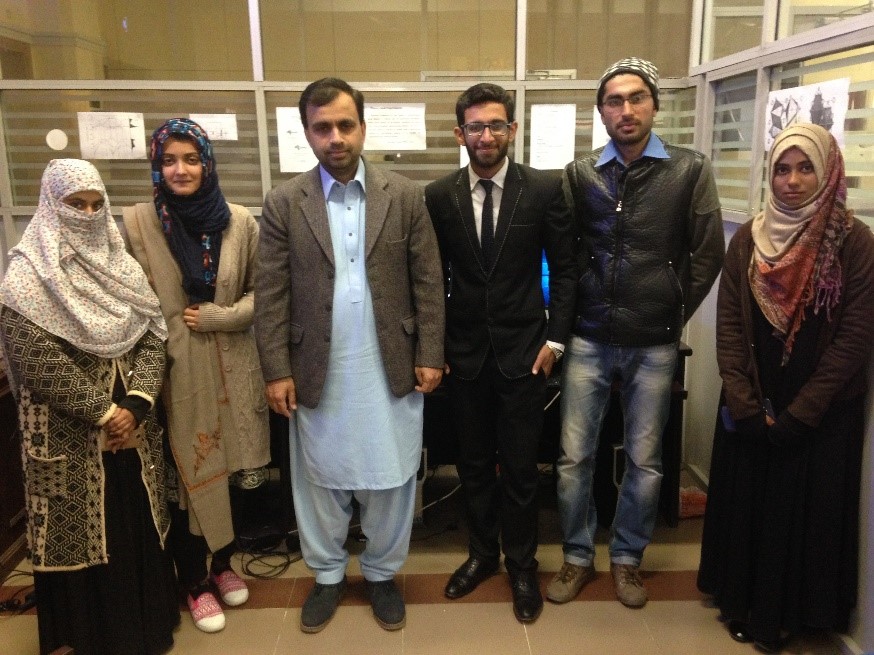
Chair tour to Japan
Chair left for japan in 2016 for Post Doctorate in computational materials


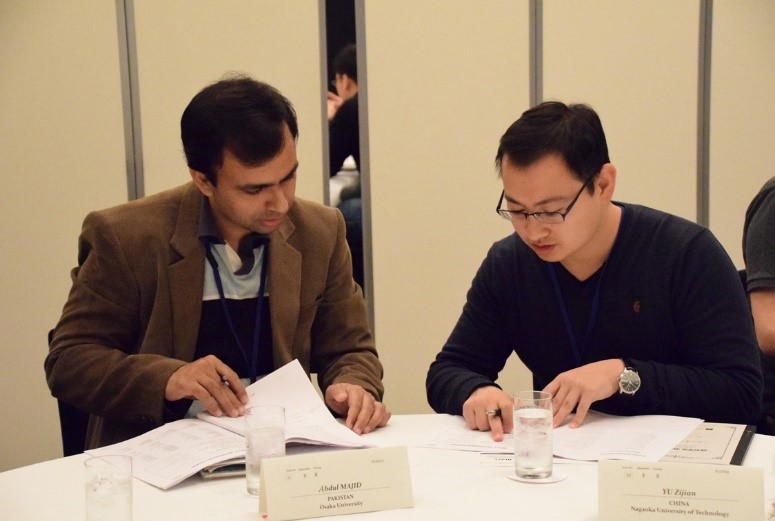
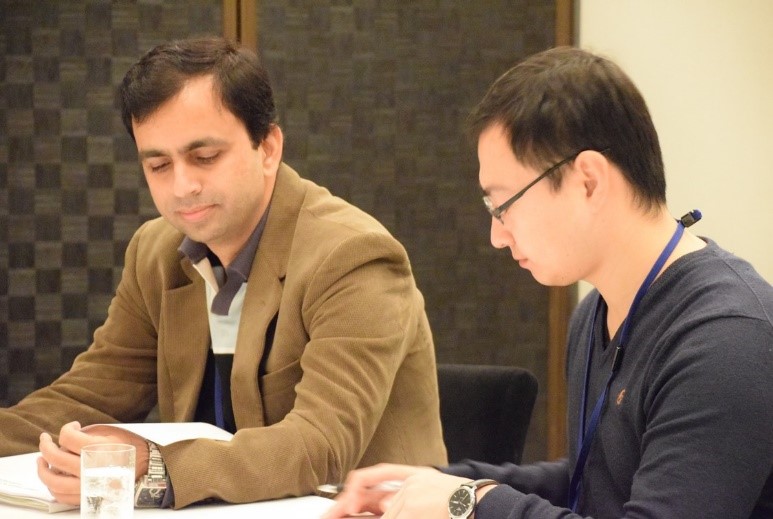
Workshop Attended
- Mr Irslan Ullah represented the material science group in the workshop on modeling and simulation of material by DFT held on 22-24 November 2016 Pakistan Institute of Nuclear science and technology (PINSTECH).
- Mr Irslan Ullah attended International training workshop on material modeling and simulation at Allama Iqabal Open University Islamabad (AIOU) it was held on 9-11 December 2016.

List of Publications
1. A Density Functional Theory Study of Electronic and Magnetic Properties of Rare Earth Doped Monolayered Molybdenum disulphide Abdul Majid, Anum Imtiaz, Masato Yoshiya, Journal of Applied Physics, 120, 142124 (2016)
2. Influence of Manganese on Structural, Dielectric and Magnetic Properties of ZnO Nanoparticles, T. Iqbal, S. Ghazal, S. Atiq, N. R. Khalid, A. Majid, S. Afsheen, N.A. Niaz Digest Journal of Nanomaterials and Biostructures, 11, 899 (2016)
3. Facile Synthesis of Mn-Doped CdTe Nanoparticles: Structural and Magnetic properties, Abdul Majid, Muhammad Tanveer, Saadia Kousar, J. Supercond. Nov. Magn. 29, 2615 (2016)
5. Microwave-assisted synthesis of Ag-TiO2/graphene composite for hydrogen production under visible light irradiation, N.R. Khalid, E. Ahmed, M. Ahmad, N.A. Niaz, M. Ramzan, M. Shakil, T. Iqbal, A. Majid, Ceramics International 42, 18257 (2016)
6. Resonant Raman scattering study of V, Cr and Co ions implanted into GaN Abdul Majid, J. J. Zhu, U. Ali Rana and S. Ud-Din Khan, RSC Advances 6, 73589-73594 (2016)
7. A computational study of magnetic exchange interactions of 3d and 4f electrons in Ti-Ce co-doped AlN, Abdul Majid, Mian Azmat, Usman Ali Rana, Salah Ud-Din Khan, Eman Alzahrani, Materials Chemistry and Physics, 179, 316-321 (2016)
8. Controlling the electronic properties of Gd: MoS2 monolayer with perpendicular electric field Abdul Majid, Arslan Ullah, Usman Ali Rana, Salah Ud-Din Khan, Masato Yoshiya, Journal of electroceramics 37, 29–33 (2016)
9. Role of nitrogen vacancies in cerium doped Aluminum nitride Abdul Majid, Farzana Asghar, Usman Ali Rana, Salauh ud Din, Masato Yoshiya, Fayyaz Hussain, Iftikhar Journal of Magnetism and Magnetic Materials, 412, 49 (2016)
10. A Density Functional Theory Study of Electronic Properties of substitutional alloying of Monolayer MoS2 and CeS2 surface models Abdul Majid, Zawaria Ghaffar, Usman Ali Rana , Salah Ud-Din Khan, Masato Yoshiya, Computational and Theoretical Chemistry, 1084, 98 (2016)
11. AC Potential-Dependent Concentration Variation and Domain Wall Pinning in Co1−x Zn x (x=0.4−0.5) Nanorods Naeem Ahmad, Amna Jaral, Gulbahar Bano, Sidrah Batool, Hira Dilpazir, Muhammad Jameel, Suleman Khan, Javed Iqbal, Abdul Majid, Muhammad Moazzam Naseer, Saqlain A. Shah J. Supercond Nov Magn 29, 509-513 (2016)
12. First order Raman scattering analysis of transition metal ions implanted GaN Abdul Majid, Usman Ali Rana, Abdul Shakoor, Naeem Ahmad, Najam al Hassan, Salah Ud-Din Khan Journal of Physics and Chemistry of Solids 35, 90 (2016)
